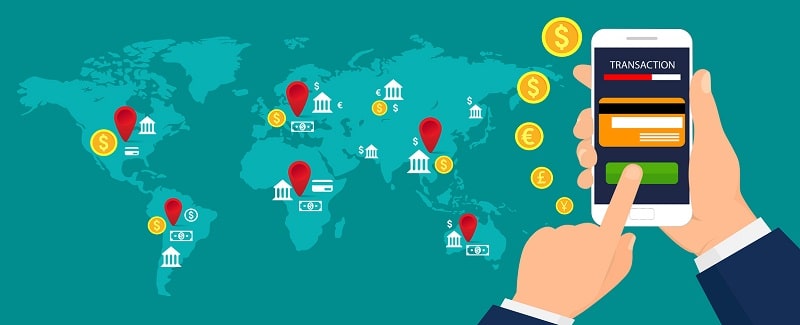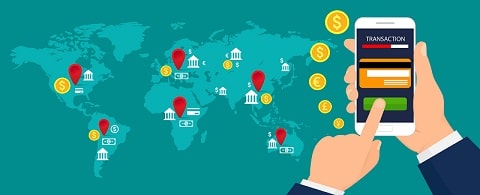The Big Question About Fintech
Posted by Nathan Marquiss on 12 Mar 2018


The financial services industry has been working diligently to deliver personalized, seamless, and on-demand customer experiences through digital and emerging channels. This is perhaps most evident in the explosion of FinTech for everything from online loans to peer-to-peer payments. Financial transactions that once seemed impossible are now commonplace, like paying bills via mobile devices or depositing checks with the snap of a picture.
Use of FinTech is becoming more widespread
A recent EY study estimates that in 2017, the overall adoption rate of FinTech was 33% among digitally active consumers. This is more than double the adoption rate reported in 2015, which was 16%. In addition, awareness of FinTech grew at a rapid pace. The study shows that 84% of digitally active consumers were aware of FinTech services in 2017, compared to just 62% in 2015.
And FinTech users don’t rely on digital channels just for their financial needs. The same study reports that 64% of FinTech users prefer to use digital channels to manage all aspects of their lives, compared to 38% of non-users.
Financial institutions are thinking differently, thanks to FinTech
Financial institutions are taking notice of today’s fluid digital landscape and the impact it’s having on consumer expectations. A study by PWC shows that more than 80% of financial institutions believe their business is at risk due to emerging FinTech and 88% are concerned that they’re losing revenue to these innovators. However, this increasingly competitive landscape is also encouraging them to think differently. The study shows that 77% of financial institutions will ramp up their efforts to innovate internally and 82% expect partnerships with FinTech companies to increase over the next three to five years.
The most popular categories of FinTech
FinTech encompasses many different categories of financial services. The EY study indicates that money transfer and payment services are the most popular categories of FinTech, with 50% of FinTech users leveraging these services in the previous six months. This number rose from a mere 18% in 2015 and represents the highest uptick among all categories of FinTech. Insurance services also saw a significant jump from 2015 to 2017, rising 16 percentage points in just a two-year period. Other popular services include financial planning, borrowing, and savings and investments.
The rise of digital-only business models
The FinTech revolution has given rise to new consumer environments that exist exclusively as digital storefronts. Neobanks, for example, are one-stop-shop financial institutions that have no physical retail footprint. Their entire business strategy - including goods, services, and customer engagement - are strictly delivered via digital interaction channels. These “digital-spinoffs” are distinct from traditional banks and have differentiated offerings that focus on transforming the customer experience. Being relatively new, it is yet to be seen if neobanks can independently scale or foster profitable businesses, but the concept is gaining traction with consumers. Given their increasing comfort with digital-only businesses that lack any true storefront identity, one can only predict that these types of business models will continue to gain momentum.
The generation gap
Is FinTech only for the young? The EY study shows that Millennials (25 to 34-year-olds) are the generation that’s most likely to use FinTech. Globally, 48% of Millennials use FinTech and the number in the US is even higher at 59%. This is perhaps unsurprising considering that these “digital natives” grew up with the internet and are now reaching milestones that require financial products, such as home loans and college savings plans.
However, digitally active consumers in the 35 to 44-year-old age group aren’t far behind. The study shows a usage rate of 50% in the US and 41% globally. The older generations are increasing their adoption rates as well. Forty percent of digitally active US consumers who are 45 to 64-years-old use FinTech and 17% of those who are 65 and older do so as well.
The big question
Millennials are clearly in the driver’s seat when it comes to the adoption and evolution of FinTech. They are new customers for many of the services that FinTech companies offer and they demand similar user experiences they find elsewhere online. But an overemphasis on this generation might mean that FinTech providers are missing out on revenue opportunities with older generations. Or perhaps they’re overlooking the up-and-comers who might have different needs and wants than the Millennials of today.
So, the big question is this: How can FinTech providers put forth strategies that encompass all generations? This requires a collective, cross-functional strategy that reaches valuable consumers who might find themselves outside of the FinTech circle. FinTech providers must be focused on developing strategies that help identify these prospects, offer solutions that meet their needs, and ultimately convert these non-users to bring them into the fold.
To paraphrase my father, it’s crucial to learn as much as we can from those that are different from us because the world is changing, and the rate of change is only getting quicker. It’s time for us to get outside of our comfort zone and anticipate changes before they happen. The availability of information at the speed of light and the ability to reach people literally in the palms of their hands makes everyone demand more. And we, in turn, should demand more of ourselves as technology providers to meet these diverse needs.
The Bottom Line: FinTech has revolutionized financial services, from peer-to-peer payments to online loans. This is especially true for Millennials, who are the generation most likely to use FinTech. But what about everyone else? FinTech providers must employ collective, cross-functional strategies to serve the most diverse audience possible.
Alacriti provides financial services and payment technology solutions to companies in the financial services, healthcare, insurance and utility industries. We offer payment processing solutions and provide software, services and outsourcing of the technology for our clients. Alacriti has a successful track record in delivering several technology solutions for some of the world's largest financial services organizations in the areas of global payments, retail banking, wholesale banking, credit cards, and international remittances.
Schedule A Personalized Demo
Schedule a Free Consultation





